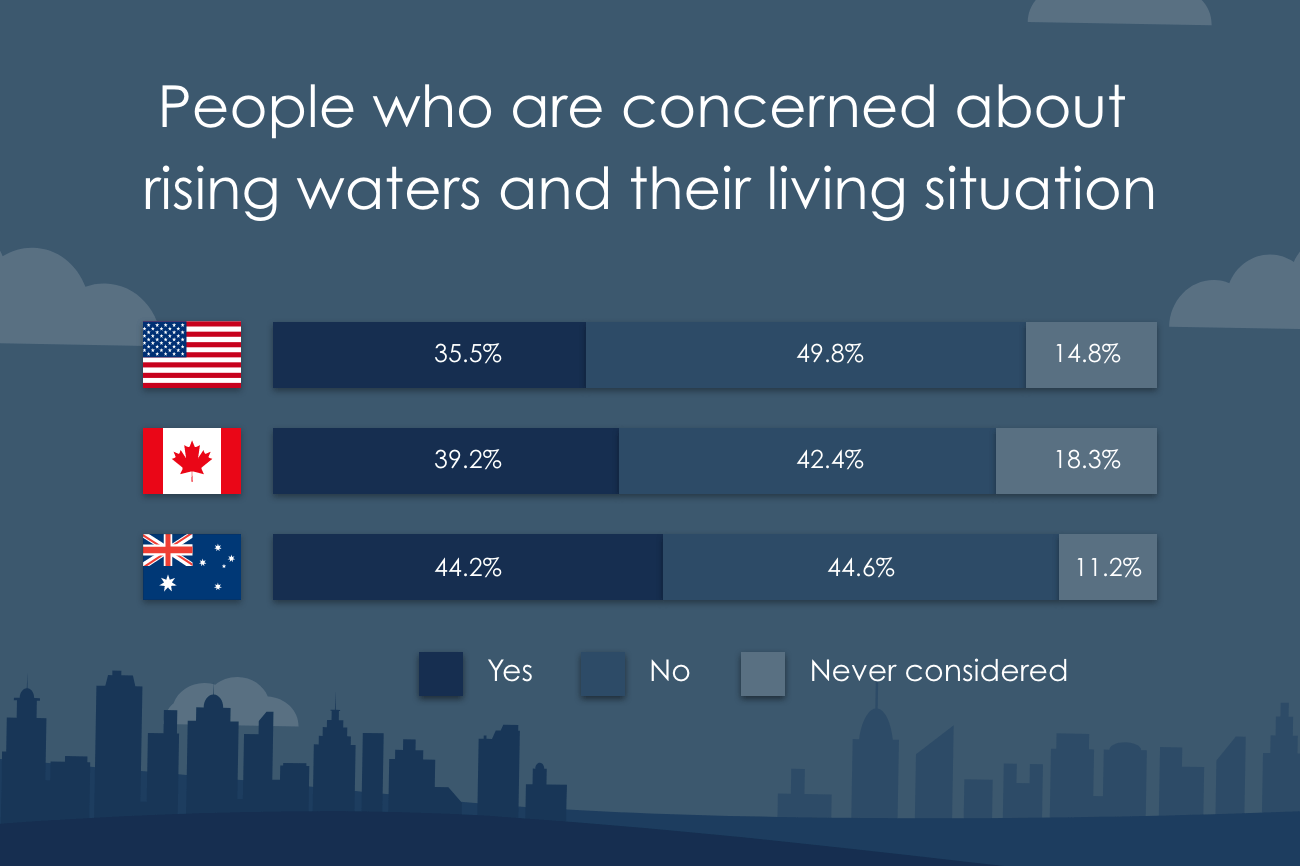The Burrow

One of the dangers of climate change is coastal flooding and inundation – but it’s not just coastlines that are at risk. Worst case scenarios show that a range of river cities, even ones that are quite a distance from the coast, are at risk of going under.1
So, what does that mean for potential homeowners who are looking to purchase in Australia?
Banks and lenders tend to adjust their lending policies based on recent events that have affected certain areas, such as rising waters and bushfires. If a lender discovers that a property or the area in which it is located has previously been affected by rising waters, they may be hesitant to lend any money towards it.
If you are looking to purchase a property, it’s important to do your own due diligence and ensure it’s not located in a known water-affected area. You can get this sort of information from your local Council, who can provide a flood map showing any history of flooding in the area.
Furthermore, before agreeing to purchase a home, it is extremely important that the lender has given you the “green light” to lend against the specific property you are looking at. You should also ensure you are aware of insurance costs, as these can be significantly higher in areas of heightened risk, which is often the case for water-affected areas.
However, not all risk can be determined through looking purely at historic data. With climate change comes the chance of rising rivers, which puts previously untouched waterside homes – and entire cities – at risk.
With this in mind, the home loan experts at Compare the Market have collated data prepared by Climate Central to visualise what a 4°C (39.2°F) increase to average temperatures could mean to some of the world’s most famous river cities, plus a host of locations here in Australia and abroad.
If you’re dreaming of purchasing a property in one of these cities as a holiday home or idyllic retirement spot, you might want to consider altering your plans.
While science shows the increasing likelihood of rising waters, we also wanted to check the pulse on what regular people think about the dangers of rising sea levels. Our survey found that Australians were equal parts concerned about how rising waters would impact their home (44.2%) and completely unphased by the potential risk (44.6%). Both Americans and Canadians were more likely to have never considered how rising waters may affect them down the line, with 14.8% of Americans and 18.3% of Canadian admitting as much.

While Australians may be the most concerned out of the bunch, Canadians are the most likely to move from their current houses if it was at risk of being flooded in the next 5 years. On average, just over two-thirds of Canadians would be willing to move, whereas are only around 64% would be willing to move in Australia and America.
However, when we asked about a property people would be purchasing in the future that may have a chance of flooding in the next 10 years, 85.7% of Australians (the most out of the three countries) said they would avoid purchasing the property. Whereas only around four-fifths of Americans and Canadians would avoid buying a home in an area under the threat of flooding in the next 10 years. Interestingly enough, people aged 55-64 in Australia and people aged 45-54 in Canada were the most likely to avoid purchasing a property if it had a chance of flooding in the next 10 years, compared to people aged 18-24 in America who were most likely not to put in an offer.
Whether you are looking for a rental for the next 2-3 years or something more long term, it pays to double-check if any potential risks may come from rising water levels, given the pace of climate change.
Compare the Market commissioned Pure Profile to survey 502 Australian, 1,007 American and 1,008 Canadian adults in March 2022.
We used a Keyhole Markup Language (KML) file prepared by Climate Central in Google Earth to get our visualisations. The file was based on findings from a scientific paper by Benjamin H. Strauss, Scott Kulp and Anders Levermann. The scientific paper, “Carbon choices determine US cities committed to futures below sea level” was published in Proceedings of the National Academy of Sciences of the United States of America Volume 112 Issue 44 in 2015. The sea level rises in the visualisation are based on an average temperature rise of 4°C by the year 2100, but do not include any future flood levees or mitigation measures that could be taken.2
1. Land projected to be below annual flood level in 2100. Coastal Risk Screening Tool, Climate Central. 2021.
2. Benjamin H Strauss, Scott Kulp, Anders Levermann. “Reply to Boyd et al.: Large long-term sea level projections do not mean giving up on coastal cities,” Proceedings of the National Academy of Sciences of the United States of America.Volume 113 Issue 10, page 1330. 2016.